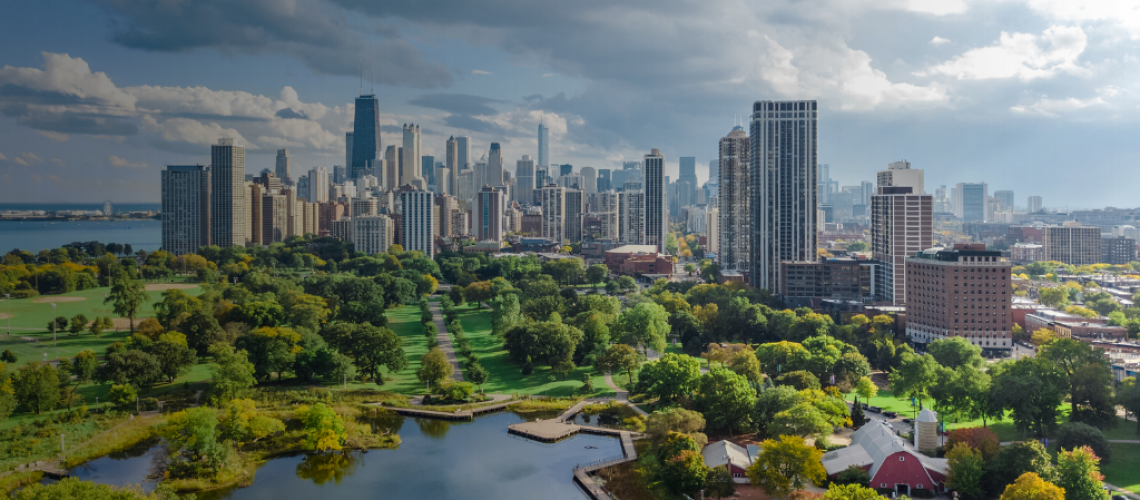By: Iyana Simba, City Programs Director
It has now been over a decade since the Department of Environment was dismantled under the Rahm Emanuel administration due to budget cuts. Since then, the Office of Sustainability, a much smaller team of staff in the Mayor’s Office has replaced the Department and carries out the city’s climate agenda. Indeed, under Mayor Lori Lightfoot’s administration the city has built out that agenda– updating Chicago’s Climate Action Plan, leading the 3-year We Will planning initiative, greening the city’s building standards and adding nearly $200 million for climate-related infrastructure in the FY2022 budget.
However, despite all of these recent investments and the Mayor’s campaign promise to re-establish the Department of Environment, Chicago still remains without one. Since disbandment, a number of positions have been cut and the remainder are spread across various departments including Planning & Development, Health, Transportation and Streets & Sanitation. This means critical environmental issues are left to be dealt with across scattered city departments and oftentimes inadequate or under trained staff.
Chicago and really the world is at a critical moment, one that demands the utmost attention toward public health and environmental protection. Not only are we still in a deadly pandemic, Chicagoans are starting to see the greater impacts from climate change – longer, hotter heat waves, polar vortexes, more frequent, intense storms and increased flooding. In fact, four of Chicago’s top ten hottest summers have occurred in the last decade, with summer 2020 being the hottest on record. In 2020, Chicago also experienced its wettest spring on record, and the same year, Lake Michigan reached record levels, permanently swallowing up beaches along parts of the the North and South shoreline.
In short, Chicago is not immune to the severe impacts of climate change. And these impacts continue to fall especially hard on Black and Brown communities who have increasingly served as dumping grounds for industry as environmental inspection and enforcement has been spread across multiple departments, making it even more difficult for residents to engage in the planning and zoning process and easier for developers to push through polluting projects. Moreover, we’ve seen how how decentralized enforcement can have severe consequences such as the city-approved botched Hilco implosion which spewed a large plume of toxic dust into Little Village, a neighborhood with degraded air quality and disproportionate asthma rates, all during the height of the COVID-19 pandemic.
See IEC’s blogs on environmental justice issues in Chicago and their solutions.
A Department of Environment could facilitate better public engagement. As of now, without a centralized body for environmental issues, residents and community organizations must identify and engage with several departments on health, air and water quality issues. This also means that Departments may be bombarded by environmental complaints that they often lack capacity to address or that are not a part of their mission. Having a central department would allow residents to more easily engage in the planning and development process and allow Departments to devote more resources to duties that are tied closely to their mission.
Finally, while Chicago has a long way to go to adequately address environmental justice, one can argue that Mayor Lighfoot’s administration has brought renewed attention to the environment. As Chicago sets out ambitious climate goals and Mayor Lightfoot checks off her her environmental campaign promises including re-eatsblishing the Department of Environment, the City needs a team that matches the size of its climate efforts. Further, as climate mitigation spending increases at the state and federal level, a Department of Environment puts Chicago in a much better position to implement those additional dollars.
Reimagining the Department of Environment
A new Department of Environment should not simply be a copy and paste of the previous one. The environmental issues and solutions of 2022 are not the same as those of 2011. Further, a new department should follow the leadership of EJ communities including community-driven decisionmaking. A new Department should also be permanent and immune to budget deficits that often show up as budget cuts to important environmental programs. In re-imagining a new Department, Chicago should look to other global cities such as New York City, San Francisco, Boston and the District of Columbia.
In short, Chicago needs to re-establish the Department of Environment in order to translate its climate investments into tangible and equitable improvements to the health and quality of life for all Chicago communities. Without coordinated oversight and inter-agency collaboration, Chicago cannot prioritize and effectuate equitable, comprehensive solutions to address environmental injustices and climate change.
But in order for there to be a new Department there needs to be funding. Just as the FY2022 budget brought millions of dollars in environmental spending, the upcoming budget, the final one of Mayor Lightfoot’s first term, will be critical in re-establishing the Department. Over the next months, IEC will work with Mayor’s Office, departments and alders to drum up support for a new Department of Environment, but we still need YOU to contact your alder to make sure come this Fall, alders across all 50 wards are ready to fight to include permanent funding for Department of Environment in FY2023 budget.

